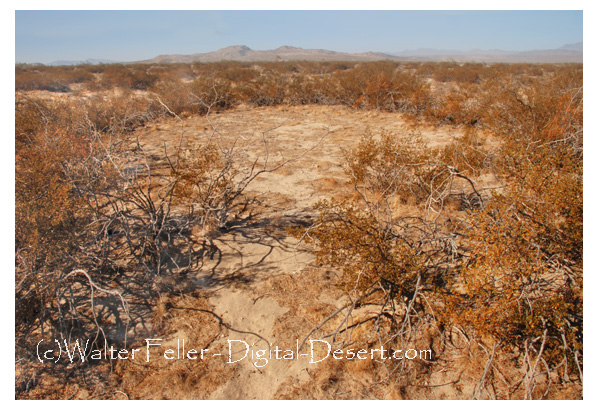King Clone

The Ancient King Clone: Proof of Longevity in the Desert
The King Clone Ecological Reserve is located in the Mojave Desert and covers a large area of 488 acres of flat land filled with creosote bushes. This reserve has a special natural wonder: it is home to the King Clone, which is one of the oldest living things in the world. This old creosote bush is about 11,700 years old and shows how strong and adaptable life can be in the tough desert.The King Clone is a clonal colony of plants, genetically identical because they all came from a single ancestor. Over time, these plants grow in a circular fashion. New stems appear on the outside, while older parts inside die and decompose. The shapes formed, which often become oval with age, can be over 20 meters wide. This new growth in the colony represents how life can carry on for thousands of years under difficult conditions.
Two scientific methods have been used to find out how old the King Clone is: radiocarbon dating and growth measurement. Radiocarbon dating looks at carbon-14 levels in the plant's center wood samples to guess its age. At the same time, growth measurement checks the plant's yearly growth, which usually averages between 0.66 and 0.82 millimeters each year. Both methods agree that the King Clone is about 11,700 years old, giving us a special look into the ancient history of the Mojave Desert.
In addition to its plant importance, the King Clone Ecological Reserve is a lively home for animals like reptiles, rodents, birds, and insects. These animals live together with the old creosote bushes, creating a special system that shows how desert plants and animals depend on each other.
The King Clone is a strong symbol of resilience and beauty, speaking to the Mojave Desert's ability to survive and grow over such an immense time span; a reminder of nature's continuing power in the face of most extreme environmental conditions. This ancient plant can be studied to learn valuable information about the ecological and geological history of the area, evoking awe and respect for how fragile yet resilient desert life is.